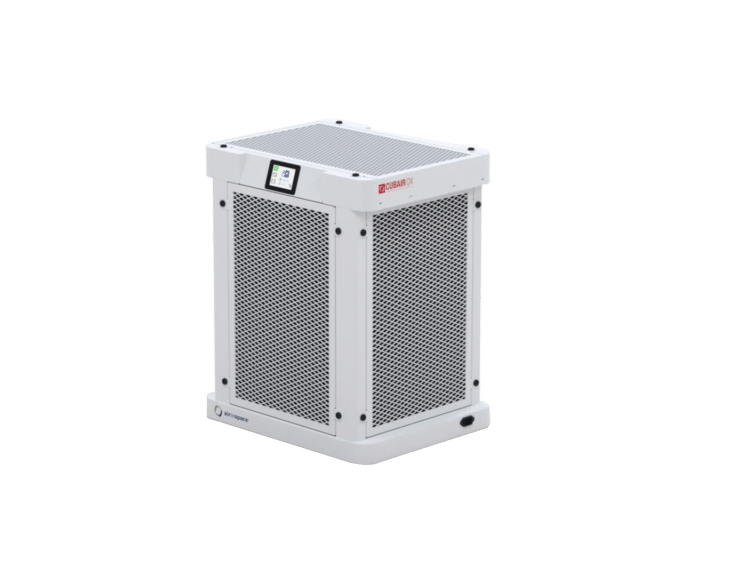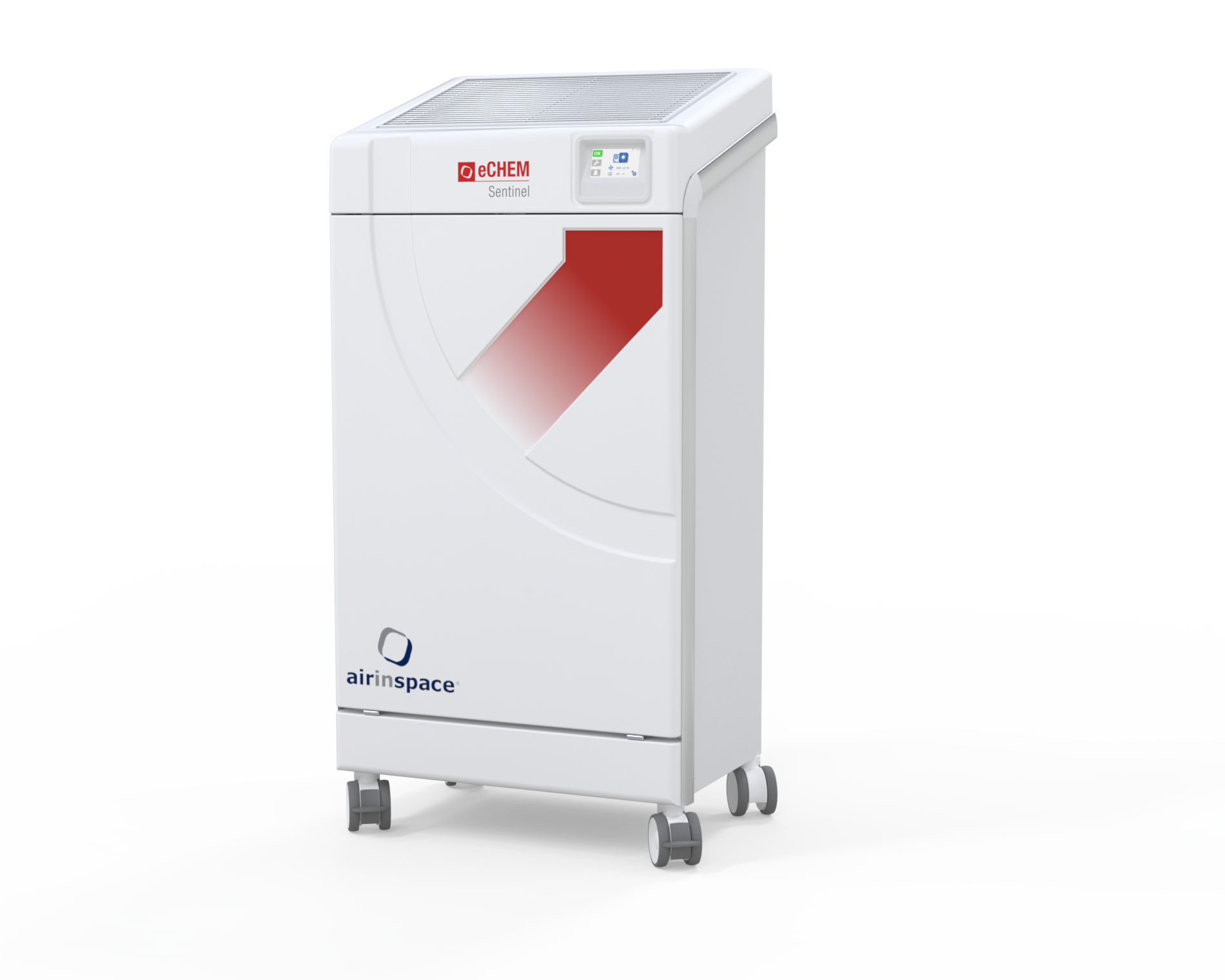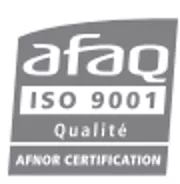Operating principle of activated carbon
Chemical substances in the air are suppressed thanks to the adsorption properties of activated carbon.
Activated carbon is characterised by broad-spectrum effectiveness: it helps retain numerous volatile organic compounds such as hydrocarbons, sulphur compounds or solvents.
By using activated carbon chemical adsorption technology, you protect your hospital staff from toxic fumes and enhance the effectiveness of your procedures in IVF and cell culture laboratories.
3 good reasons to choose airinspace’s activated carbon chemical adsorption technology
- Limited desorption and release of the molecules captured thanks to the quality of carbon used;
- Optimal retention of molecules through activated carbon with large active surface;
- Enhanced effectiveness through the use of carbon specific to the type of molecule to be removed, such as permanganate-loaded carbon.
Our activated carbon air purifiers

CUBAIR OX
Mobile chemical air decontamination unit for oxidising molecules and acids

eCHEM Sentinel
High-capacity mobile chemical air decontamination unit for oxidising molecules and acids
Studies and publications
Control of chemical air pollution peaks in the IVF laboratory
List of publications on air quality in IVF laboratories
Evaluation of surface biocleaning effectiveness when using an airborne disinfection device in haematology intensive care units
Manual biocleaning versus airborne disinfection in Haematology
Evaluation of the microbiological quality of biocleaning in haematology intensive care units
